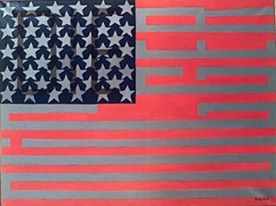“My work is always autobiographical—it’s about what is happening at the time. I always do what is honest to me. I think all artists should try to be knowledgeable about the world and express feelings about what they’re observing, and what’s important to them. My advice is: Find your voice and don’t worry about what other people think.” – Faith Ringgold
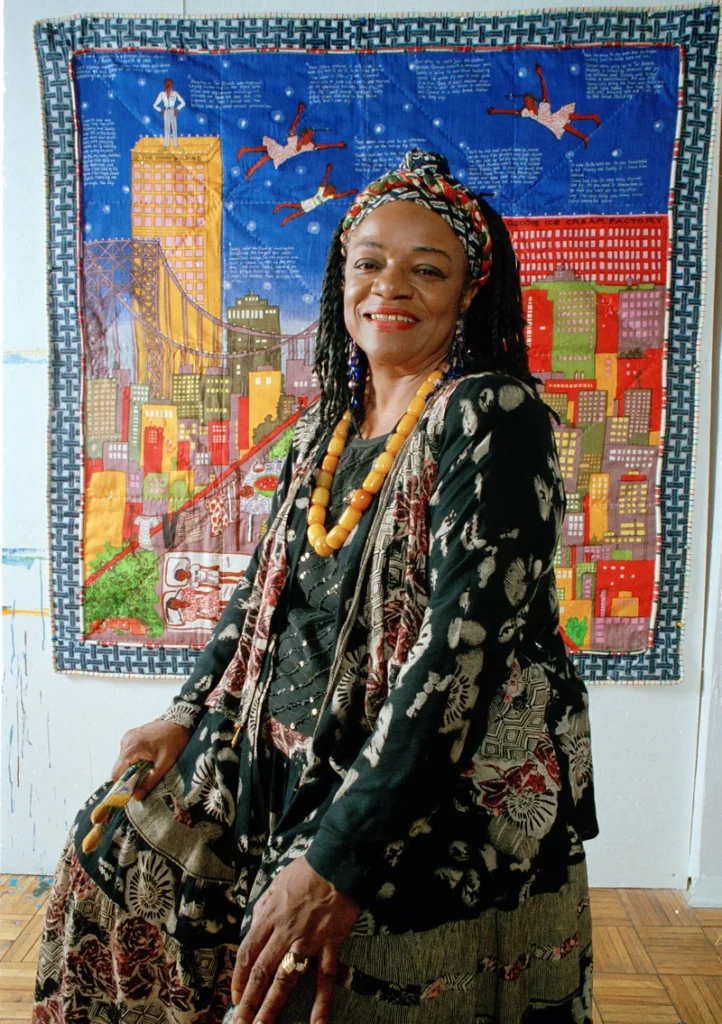
Artist Faith Ringgold sits before her quilt “Tar Beach” in 1993. The artwork also inspired a children’s book of the same name.
Kathy Willens/AP
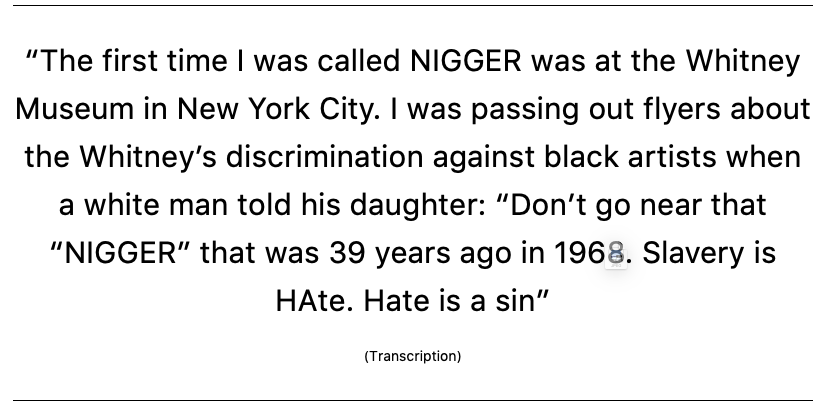

Faith Ringgold Hate is a Sin Flag, 2020
“What has not changed is people are still doing whatever they think they can get away with. I think there’s still a lot of advancement for people, generally speaking, to learn to let other people live in the world with freedom.”
– Faith Ringgold
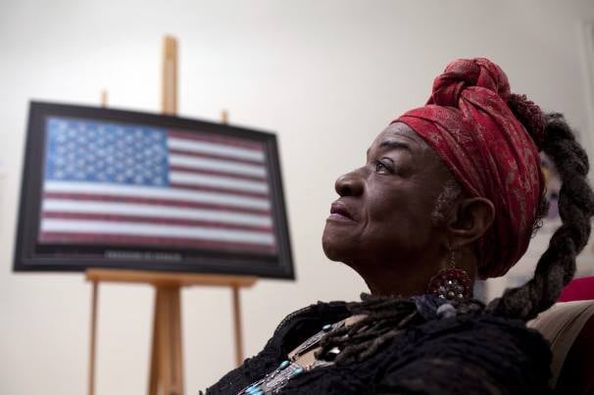
As an African American in the 1960s, Faith used her artistic abilities to let her voice be heard at a time when many would not listen. In Figure 1, Die, Ringgold paints a very violent scene involving White and Black figures with weapons. This scene depicts how the tension between races often results in violence (Lewis 147). Upon my analysis as an Art Historian, I find the figures are arranged in a fashion so the viewer is constantly looking at the artwork, with their eyes moving with the colors and shapes in the work. The blood adds an extreme sense of emotion where the viewer almost feels the pain. The figures are placed as if they are floating in madness. In the center, two children (one White and one Black) are seen embracing each other, possibly as a statement of a possible future of racial unity. The background is a sort of checkerboard-like pattern, which could symbolize the game of chess, where you strive to kill your opponent’s men. “Painting is the ultimate magic act in which you transform a flat surface into a three-dimensional illusion of form and space. Time and place disappear as you begin to see your ideas materialize” (Ringgold 196).
Another artwork that displays hidden racism is Flag on the Moon: Die Nigger, (Figure 2) which was created in 1969. This painting is strongly influenced by Apollo II’s landing on the moon in July 1969, where Neil Armstrong stepped on the moon and placed the American Flag there (Patton 197). From an uneducated gaze, the flag may seem simply a maze or an abstract painting. The American flag became very popular after being placed on the moon, showing a promising future for the country and its people (Patton 197). The message of this flag is much darker, showing “DIE NIGGER” when examining it closer. Although landing on the moon was an outstanding achievement, it seems Faith expresses in her artwork the lack of attention placed on the issues “in” our country. A large amount of money was going to new methods of space exploration, while many were poor and suffering, especially African Americans (Patton 197). The American flag was a symbol that many African-American artists used to express the overall neglect and violence that they faced (Lewis 147). Because of this painting’s controversial nature, author Sharon Patton states that Faith Ringgold was arrested, along with two other artists (called the Judson Three), for their protest against the flag (Patton 197). By choosing to create this artwork not worrying about the consequences it may bring, Faith Ringgold can show her fearless nature as a human being and her overall dedication to her opinions.
Faith Ringgold’s art of fearlessness and joy
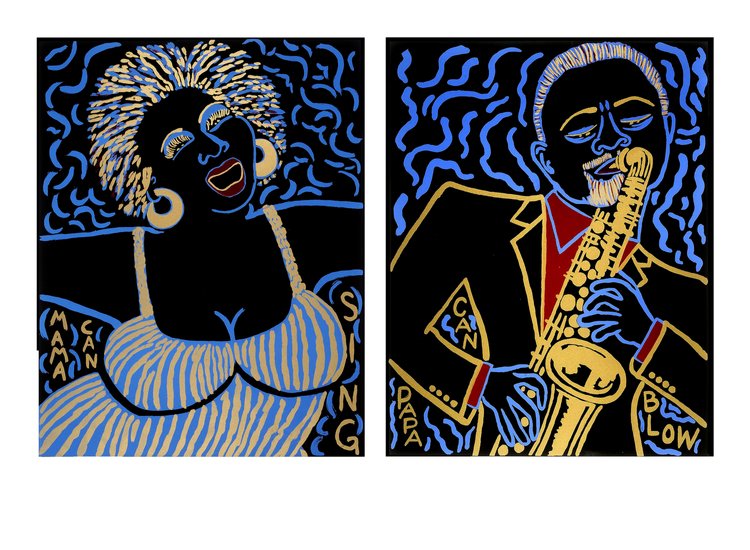
Mama Can Sing, Papa Can Blow, 2021

Wynton’s Tune, 2004

